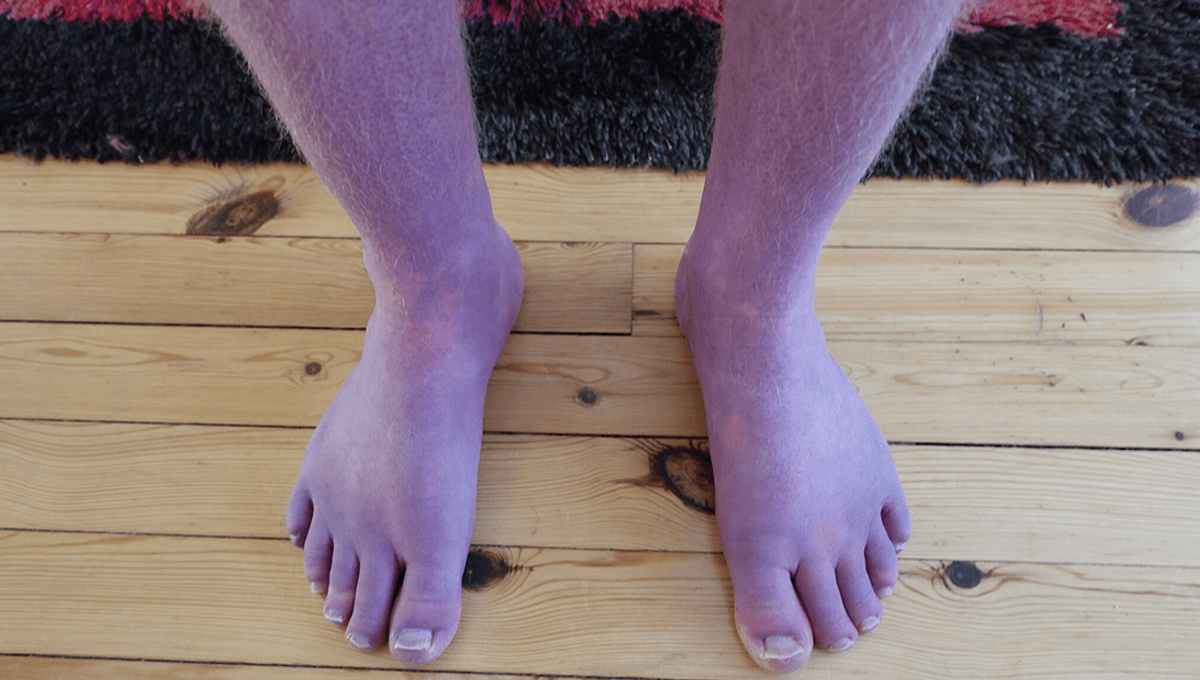
Doctors have described the case of a man whose legs turned purple, believed to be a rare complication resulting from long COVID.
The 33-year-old was referred to a specialist clinic after experiencing the unusual symptom for six months. Upon standing, his legs would begin to feel heavy, itchy, and tingly, while also turning an unusual shade of purple. The symptoms would disappear when he lay down.
The patient’s blood pressure and pulse were taken by the team while lying down, and after 8 minutes of standing. His pulse was found to be in the normal range lying down, but high on standing at 127 beats per minute. The man reported other symptoms, such as feeling foggy and shaky, which were consistent with postural orthostatic tachycardia syndrome (POTS).
Normally, when you stand up some of your blood moves down in your body, due to our old foe gravity. Your body compensates for this by slightly increasing your heart rate and narrowing your blood vessels, to ensure the flow of oxygen to your heart and brain.
“If you have PoTS these automatic changes don’t happen,” the British Heart Foundation explains on their website. “When you move to an upright position the supply of blood to your heart and brain drops and your heart rate increases to compensate and to try and increase the blood flow. ”
The patient had experienced a confirmed COVID-19 infection 18 months prior to being seen by the team, as well as a suspected infection half a year later. Following the infections, he was seen by another specialist clinic due to feelings of exhaustion, muscular pain, brain fog, and other symptoms associated with long COVID, leading to this diagnosis. The team writes in their paper that there is “evidence is growing of a link between long COVID and POTS dysautonomia”, which can occur following viral infections. A previous study found POTS occurring in 20 previously healthy patients following a COVID-19 infection.
“This was a striking case of acrocyanosis in a patient who had not experienced it before his COVID-19 infection,” paper co-author Dr Manoj Sivan said in a statement, calling for awareness of the unusual condition among the public and medical community.
“Patients experiencing this may not be aware that it can be a symptom of long COVID and dysautonomia and may feel concerned about what they are seeing. Similarly, clinicians may not be aware of the link between acrocyanosis and long COVID.”
“We need to ensure that there is more awareness of dysautonomia in long COVID so that clinicians have the tools they need to manage patients appropriately.”
The study is published in The Lancet.
Source Link: Man's Legs Turn Purple In Rare Complication From Long COVID